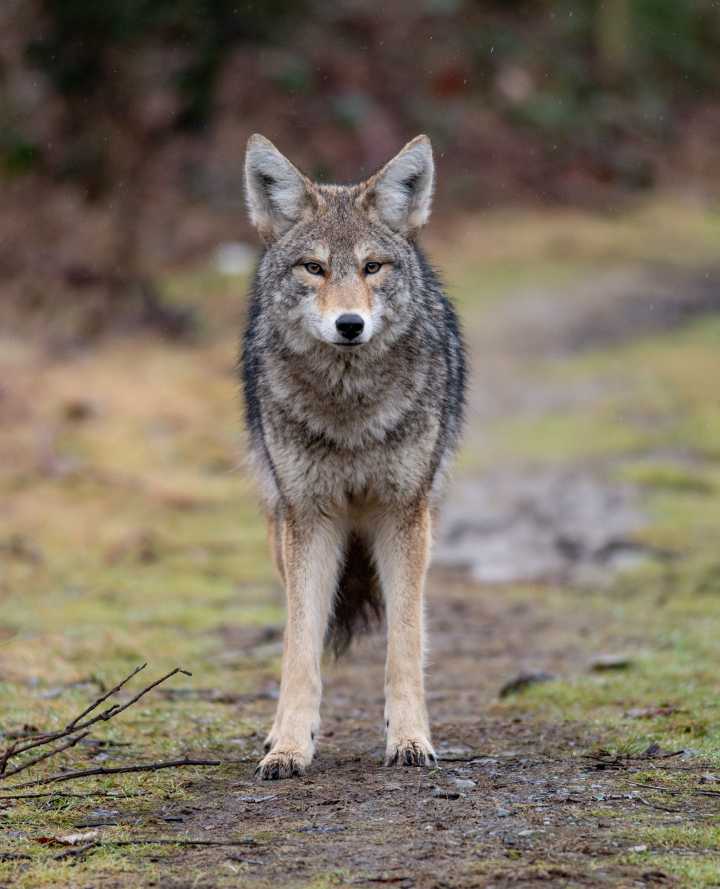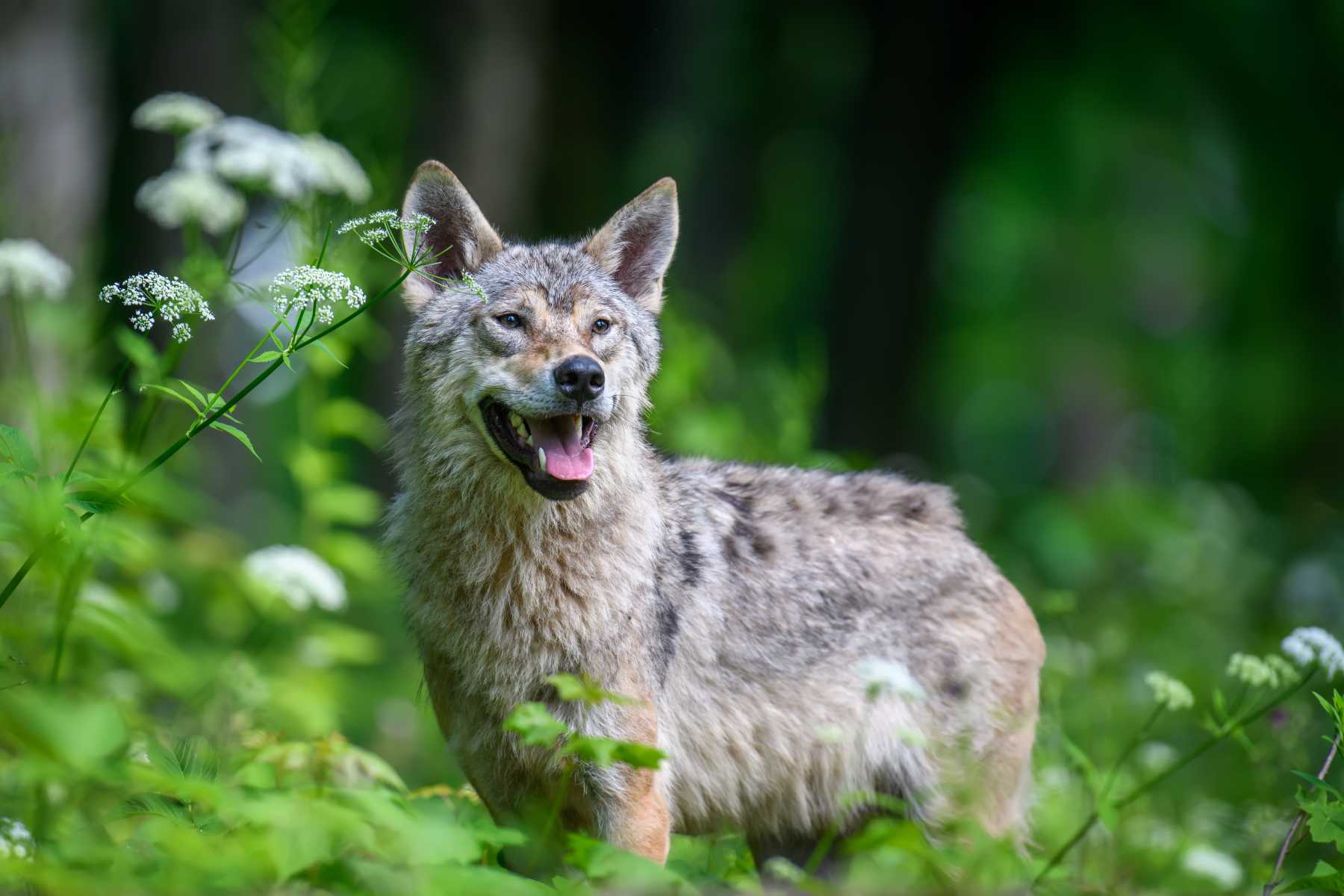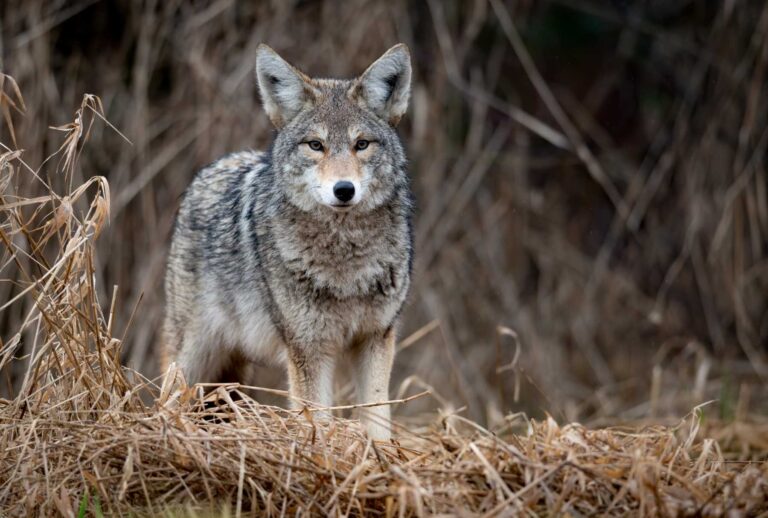Are Coyotes Friendly? Unraveling the Complex Nature of Our Canine Neighbors
Are Coyotes Friendly?
Coyotes, often mysterious figures of the wild, have adapted to the ever-expanding human landscape. Are these elusive creatures amiable, or is their reputation for cunning and aggression well-founded? In this exploration, we delve into the intricate world of coyote behavior, separating fact from fiction and shedding light on the dynamics that define their relationship with humans.
Overview of Coyote Behavior
Coyotes, scientifically known as Canis latrans, are highly adaptable canids that have successfully carved a niche in various ecosystems across North America. Their behavior is as complex as the landscapes they inhabit, with a hierarchical social structure within packs and a keen ability to adapt to changing environments.
These creatures exhibit solitary and social behaviors, often forming pack family units. A typical coyote pack comprises a mated pair and their offspring, creating a cohesive group that collaborates in hunting and territorial defense. This social structure, however, doesn’t necessarily translate into aggression towards humans.
Interaction with Humans

Historically, coyotes have been present in North America long before human settlements expanded. However, as urbanization encroaches upon their habitats, interactions between humans and coyotes have become more frequent. Understanding these interactions requires an examination of the historical context and the impact of human activities on coyote behavior.
The human-coyote relationship has evolved and is shaped by factors such as habitat destruction, the availability of food sources, and even intentional feeding by humans. While conflicts arise, especially in urban areas, it is essential to recognize that aggression is not the sole characteristic defining the nature of these interactions.
Understanding Aggression in Coyotes
Aggression is a natural behavior in many species, including coyotes. Factors contributing to coyote aggression include territorial defense, protection of offspring, and competition for resources. Instances of aggression towards humans are documented, but they are often the result of specific circumstances.
In rare cases, habituation to human presence or the influence of artificial feeding can lead to bold behaviors, potentially escalating to aggression. However, these instances do not reflect the general demeanor of coyotes, sparking a need to distinguish between individual cases and broader behavioral patterns.
Factors Influencing Coyote Friendliness
Coyote friendliness, or lack thereof, is shaped by many factors. Environmental conditions, including natural prey availability and suitable habitats, play a crucial role. Coyotes may exhibit more relaxed behaviors around humans in areas where food sources are abundant and disturbances are minimal.
Human behavior and perception also contribute significantly to the friendliness of coyotes. Fear and misunderstanding can lead to negative encounters, as can deliberate attempts to approach or feed coyotes. Thus, promoting coexistence requires a holistic understanding of the factors influencing coyote behavior and adapting our behaviors accordingly.
Factors Influencing Coyote Friendliness
| Factors | Influence on Coyote Friendliness |
| Environmental Conditions | Abundant food sources and minimal disturbances may lead to more relaxed behaviors. |
| Human Behavior | Fear, misunderstanding, and deliberate attempts to approach or feed coyotes can impact their friendliness. |
Case Studies of Coyote Behavior
Exploring documented cases of friendly coyote encounters provides valuable insights into the nuanced nature of their behavior. Instances where coyotes have exhibited curiosity without aggression or have shown tolerance towards human presence highlight the potential for harmonious coexistence.
One notable case involves a suburban neighborhood where coyotes routinely pass through without causing harm. Residents were educated about appropriate behaviors to minimize conflict and reported positive interactions. These cases emphasize the importance of understanding and respecting the wild nature of these animals.
Case Studies of Coyote Behavior
| Case | Description | Key Takeaways |
| Suburban Neighborhood | Coyotes coexist peacefully with residents, showcasing the potential for harmonious interaction through education and awareness. | Education and respect for wild nature are crucial for minimizing conflicts. |
Communication and Vocalizations
Coyotes communicate through a variety of vocalizations and body language. Understanding these forms of communication can provide valuable insights into their intentions and help humans interpret and respond appropriately to their presence.
Coyote vocalizations include howls, yips, and barks, each serving different purposes. Howls, for example, are often associated with territorial communication, while yips and barks may signal excitement or warning. Recognizing these cues can aid in creating an environment where humans and coyotes can coexist without unnecessary conflict.
Ecological Role of Coyotes
Coyotes play a crucial role in maintaining ecosystem balance. As opportunistic omnivores, they help control populations of small mammals, rabbits, and rodents, preventing overgrazing and the spread of diseases. This ecological role underscores the importance of understanding and preserving their presence in diverse ecosystems.
Research indicates that there can be adverse effects on local biodiversity in areas where coyotes are removed, or their populations decline. Recognizing their ecological significance adds another layer to the discussion about the role of coyotes in our communities.
Ecological Role of Coyotes
| Role | Importance | Impact of Decline |
| Population Control | It helps control small mammal populations, preventing overgrazing and disease spread. | The decline can lead to adverse effects on local biodiversity. |
Myths and Misconceptions
As with many wildlife species, coyotes are often subject to myths and misconceptions. Dispelling these myths is crucial for fostering a more accurate understanding of their behavior and promoting informed coexistence strategies.
One prevalent myth is that coyotes are solely nocturnal animals. While they are indeed more active at night, coyotes can also be active during the day, especially in areas with less human activity. Understanding these behavioral nuances can contribute to more realistic expectations and interactions.
Myths and Misconceptions about Coyotes
| Myth | Reality | Importance of Dispelling |
| Nocturnal Behavior | Coyotes can be active during the day, dispelling the myth of their strictly nocturnal nature. | Promotes realistic expectations and understanding of their behavior. |
Human-Coyote Conflict Resolution
Conflicts between humans and coyotes can be mitigated through various strategies. Proactive measures, such as securing garbage, removing attractants, and avoiding intentional feeding, are crucial in preventing situations that could lead to negative interactions.
Community initiatives promoting coexistence involve educating residents about coyote behavior and implementing responsible practices. These initiatives empower communities to address conflicts through awareness and understanding rather than resorting to drastic measures such as lethal control.
Human-Coyote Conflict Resolution Strategies
| Strategy | Description | Role in Conflict Mitigation |
| Securing Garbage | Prevents access to food sources, reducing the likelihood of conflicts. | Proactive measures to minimize attractants. |
| Community Education | Raises awareness about coyote behavior, fostering a sense of responsibility and coexistence. | Empower communities to address conflicts through understanding. |
Role of Education and Awareness
Educating the public about coyote behavior is a pivotal step in promoting coexistence. Public awareness campaigns can dispel myths, provide information on responsible behaviors, and encourage communities to minimize conflicts actively.
Promoting responsible pet ownership is also an integral aspect of education efforts. Encouraging leash laws and supervising pets outdoors can reduce the risk of confrontations between pets and coyotes, ultimately contributing to safer communities for humans and wildlife.
Legal and Conservation Efforts
Legislation and conservation efforts play a significant role in managing human-coyote interactions and preserving coyote populations. Laws governing wildlife management vary by region, with some areas implementing measures to protect coyotes and others allowing for controlled hunting or trapping.
Conservation efforts focus on maintaining healthy coyote populations while addressing conflicts with humans. These efforts often involve collaboration between government agencies, wildlife organizations, and community stakeholders to develop strategies that balance conservation goals with public safety concerns.
Cultural Perspectives on Coyotes
Coyotes hold a prominent place in the folklore and mythology of various cultures. From Native American traditions to modern literature and art, these animals have been depicted as symbols of resilience, adaptability, and cunning intelligence.
In Native American mythology, coyotes are often portrayed as tricksters or shape-shifters, embodying the duality of nature and the complexity of human-animal relationships. Understanding these cultural perspectives enriches our appreciation for the significance of coyotes in shaping human narratives and worldviews.
Future Outlook
As human populations expand and landscapes evolve, the dynamics of human-coyote interactions will undoubtedly shift. Predicting the future of these interactions requires considering ongoing changes in habitat, human behavior, and wildlife management practices.
Technological advancements, such as GPS tracking and remote sensing, offer new opportunities for studying coyote behavior and monitoring their movements in urban and rural environments. By integrating scientific research with community engagement, we can work towards fostering sustainable coexistence between humans and coyotes.
Conclusion
The question of whether coyotes are friendly is not quickly answered in black-and-white terms. Many factors, including environmental conditions, human interactions, and cultural perceptions, shape their behavior. By understanding and respecting the wild nature of these animals, we can strive towards fostering harmonious coexistence and preserving the unique role that coyotes play in our ecosystems. As we navigate the complex terrain of human-wildlife relationships, may we approach the challenge with empathy, curiosity, and a commitment to shared stewardship of our natural world?


